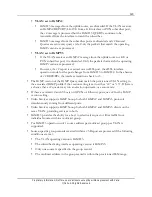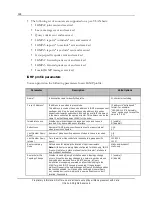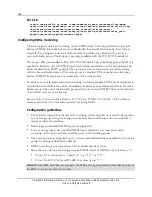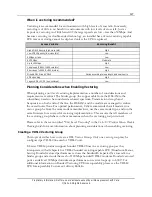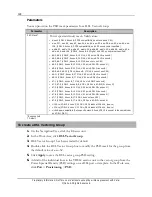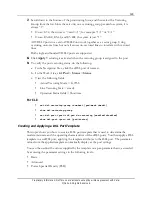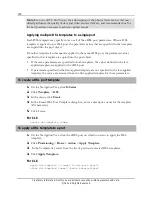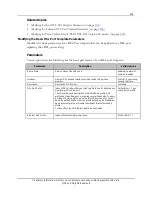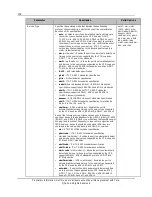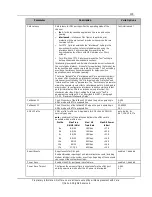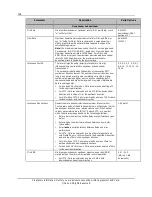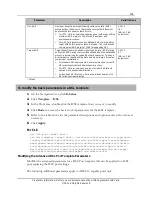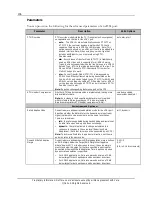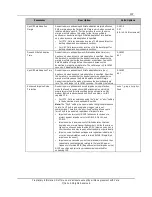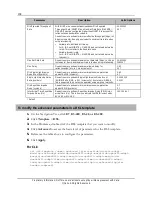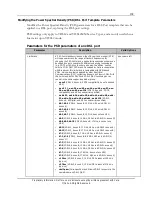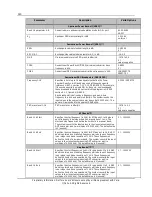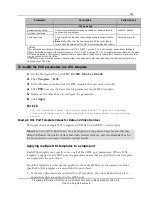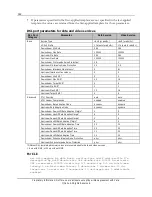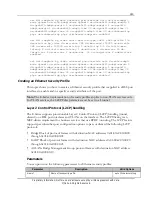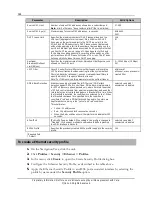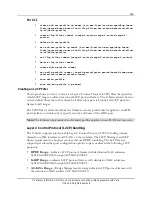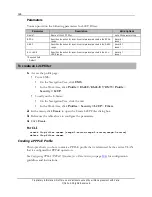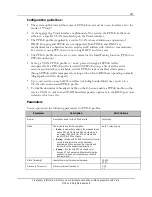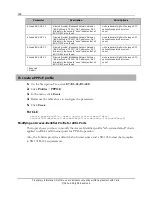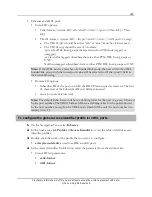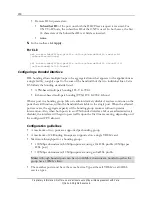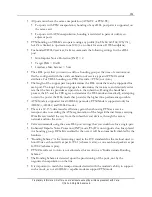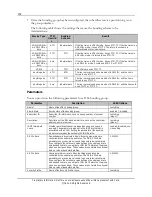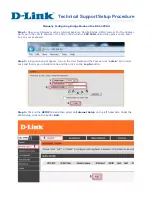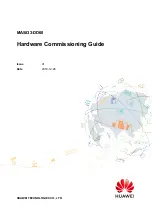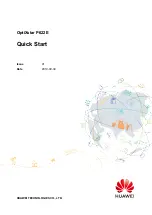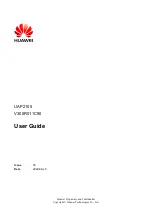
137
Proprietary Information: Not for use or disclosure except by written agreement with Calix.
© Calix. All Rights Reserved.
Parameter
Description
Valid Options
Upshift Rate Adaption
Margin
Downstream or upstream upshift rate adaption margin defines an
SNR margin above the Target SNR Margin which, when exceeded,
initiates a bitrate "upshift." For the increase to occur, the noise
margin must stay above this value for the time specified in
upstream or downstream Upshift Rate Adaptation Time. Applies
only when dynamic rate adaptation is specified.
For IPTV, Calix recommends a value of 3 dB above target for
both upstream and downstream directions.
For HSI, Calix recommends a value of 1 dB above target for
both upstream and downstream directions.
0.0-31.0
3.0 ‡
(dB, in 0.1 dB increments)
Downshift Rate Adaption
Time
Downstream or upstream downshift rate adaptation time (sec).
Applies only when dynamic rate adaptation is specified. Specifies
the duration in seconds that the downstream or upstream noise
margin must stay below the downstream or upstream Downshift
Rate Adaptation Margin before the modem decreases the
downstream or upstream data rate. The valid range is 0 to 16383
seconds. 0 disables the feature.
0-16383
60 ‡
Upshift Rate Adaption Time
Downstream or upstream upshift rate adaptation time (sec).
Applies only when dynamic rate adaptation is specified. Specifies
the duration in seconds that the downstream or upstream noise
margin must stay above the Rate Adaptation Upshift Margin
Downstream before the modem increases the downstream data
rate. The valid range is 0 to 16383 seconds. 0 disables the feature.
0-16383
60 ‡
Enhanced Impulse Noise
Protection
Downstream or upstream enhanced impulse noise protection
mode that used in conjunction with Retransmission which is a
proprietary method for retransmitting data and requires a DSL
modem that is Broadcom based and PhyR enabled, or G.INP
capable CPE.
For IPTV, Calix recommends using the "g.inp" or "phyr" setting
in the downstream and upstream direction.
Note:
The "PhyR" setting is a special mode that gives precedence
to rate. Yet, PhyR is only enabled as long as rate is not
compromised. Therefore, the "phyr-fixed" setting allows you to
force PhyR to be enabled, regardless of impact to rate.
Impulse Noise Immunity (G.INP) enhances techniques to
protect against impulse noise for ADSL2, ADSL2+, and
VDSL2.
Impulse noise is a noise event of limited duration that can
degrade one or more transmitted symbols. Unlike the various
types of continuous noise found on DSL, impulse noise has a
short duration and may repeat, either randomly or periodically.
Impulse noise that does not appear to repeat periodically, but
occur as unpredictable events is termed SHINE (Single high
impulse noise event).
Impulse noise caused by noise from electrical mains and thus
repeats at a constant period related to the local AC power
frequency is termed REIN (Repetitive electrical impulse noise).
G.INP specifies a physical layer retransmission method for
enhancing INP.
none ‡, g.inp, phyr, phyr-
fixed

